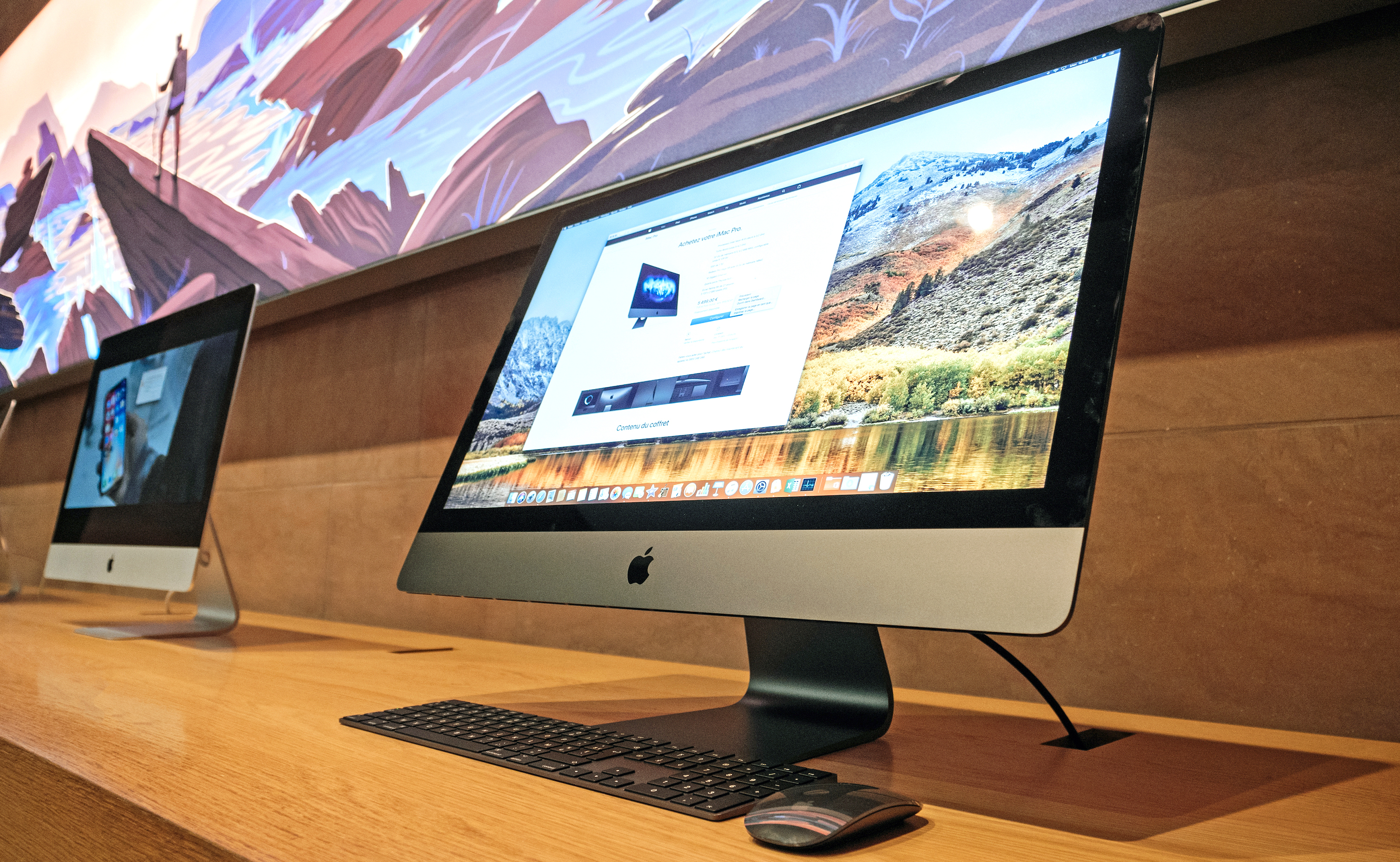Tom's Guide Verdict
The Samsung Galaxy S20 Ultra delivers astonishing zoom, 5G and serious performance — but it's still far from perfect.
Pros
- +
Impressive photos
- +
Gorgeous 120Hz display
- +
5G support
- +
Huge 5,000 mAh battery
Cons
- -
No headphone jack
- -
120Hz is a battery killer
Why you can trust Tom's Guide
Is it still worth buying the Samsung Galaxy S20 Ultra? It's been over 18 months since the phone launched, at which point it's been passed by the Galaxy Note 20, as well as the S-Pen toting Galaxy S21 Ultra and Galaxy Z Fold 3.
The answer is still a resounding yes. Not only is the S20 Ultra a perfectly capable and powerful phone, time has only lowered its once-hefty price tag. It may not have S Pen support, a folding screen, or even a dual 3x and 10x telephoto camera lenses, but what this phone does have means it's still a very appealing choice.
- Check out our Samsung Galaxy Z Fold 3 review
- Samsung Galaxy S21 Ultra vs Galaxy S20 Ultra: What's different?
Samsung packed what was the most advanced camera at the time into the Galaxy S20 Ultra: a quad-lens module that includes a 108-megapixel main sensor, and 10x lossless zoom that offers up to 100x in digital power.
Editors' Note: Samsung has unveiled the Galaxy S22 Ultra, and our Galaxy S22 Ultra vs. Galaxy S20 Ultra outlines the differences between these two high-end phones.
One quick look at those top-flight optics and sensors, and you'd assume the Galaxy S20 Ultra was destined to be the best camera phone on the market. But thanks to a number of frustrating bugs at launch, the photos we initially took weren't anywhere near as impressive as you'd hope. Especially given the original price.
Fortunately, the S20 Ultra is so much more than just a camera, with its gargantuan 6.9-inch, 120Hz display and future-proof support for every major carrier’s 5G network. And if nearly 7 inches of screen real estate is more than you need, Samsung offers alternative options: there's the slightly more compact 6.7-inch Samsung Galaxy S20 Plus or the even smaller and cheaper 6.2-inch Samsung Galaxy S20 — though those models lose the Ultra’s powerful zoom.
Just about everything is supersized about the Galaxy S20 Ultra. That makes it one of the best high-end phones out there, though the newer Samsung Galaxy Note 20 Ultra and Samsung Galaxy S21 Ultra incorporate many of the S20 Ultra's features — like that 108-MP camera — to better effect.
Get instant access to breaking news, the hottest reviews, great deals and helpful tips.
Samsung Galaxy S20 Ultra: Cheat Sheet
- The Galaxy S20 Ultra has a groundbreaking 108-megapixel main rear camera and 10x lossless zoom, but it was troubled by autofocus issues at launch. Samsung issued software updates after the phone's release that addressed some of these camera problems.
- The Galaxy S20 Ultra sports Samsung's first-ever 120Hz AMOLED display, and this one's a whopper, measuring 6.9 inches from corner to corner.
- With a huge 5,000 mAh battery, the Galaxy S20 Ultra can deliver about 12 hours of endurance when set to the default 60Hz refresh rate. At 120Hz, however, that runtime dives to just a little over 9 hours.
- The Snapdragon 865 CPU and 12GB of RAM inside the S20 Ultra make it very snappy, yet benchmarks and our real-world video editing test illustrate that it's still a shade behind Apple's iPhone 11 Pro Max.
- The Galaxy S20 Ultra packs a 5G modem that allows it to connect to both long-range sub-6GHz and millimeter-wave networks on any major U.S. carrier. We recorded upwards of 100Mbps on the former, though speed will be heavily dependent on your service provider.

Samsung Galaxy S20 Ultra: Price and availability
The Samsung Galaxy S20 Ultra launched with an eye-watering $1,399 price tag, though thankfully that price has not stuck around. The starting configuration includes 12GB of RAM and 128GB of storage, but you can upgrade to a 16GB/512GB model for a bit more money if you need more memory and capacity.
Thankfully the launch of the Galaxy S21 Ultra, which starts at $1,199, means the price has been dropping quite a bit. Shop around and you can easily find a brand new S20 Ultra for less than $1,000. Expect that to decrease even more as time goes on. You can also use one of our Samsung promo codes to get a discount.
The Galaxy S20 Ultra is available through all major U.S. carriers, including AT&T, Sprint, T-Mobile and Verizon. If you're looking to snap up an S20 Ultra and save, be sure to check out our guide to the best Galaxy S20 deals. Some retailers and carriers are offering goodies, such as gift cards and additional credit toward a new S20 when you trade in your current smartphone.
- Best Samsung Galaxy S20 deals
Samsung Galaxy S20 Ultra review: Specs
| Price | $1,399, $1,599 |
| Display | 6.9-inch Dynamic AMOLED (3200x1440; 120Hz) |
| Rear cameras | Quad-lens: 108MP wide (ƒ/1.8); 48MP telephoto (ƒ/3.5); 12MP ultrawide (ƒ/2.2); time-of-flight VGA |
| Camera zoom | 4x optical zoom, 10x hybrid "lossless," 100x digital zoom |
| Front camera | 40MP (ƒ/2.2) |
| Video | Up to 8K at 24 fps |
| CPU | Qualcomm Snapdragon 865 |
| RAM | 12GB, 16GB |
| Storage | 128GB, 512GB |
| microSD | Yes, up to 1TB |
| Battery | 5,000 mAh |
| Size | 6.6 x 2.7 x 0.34 inches |
| Weight | 7.7 ounces |
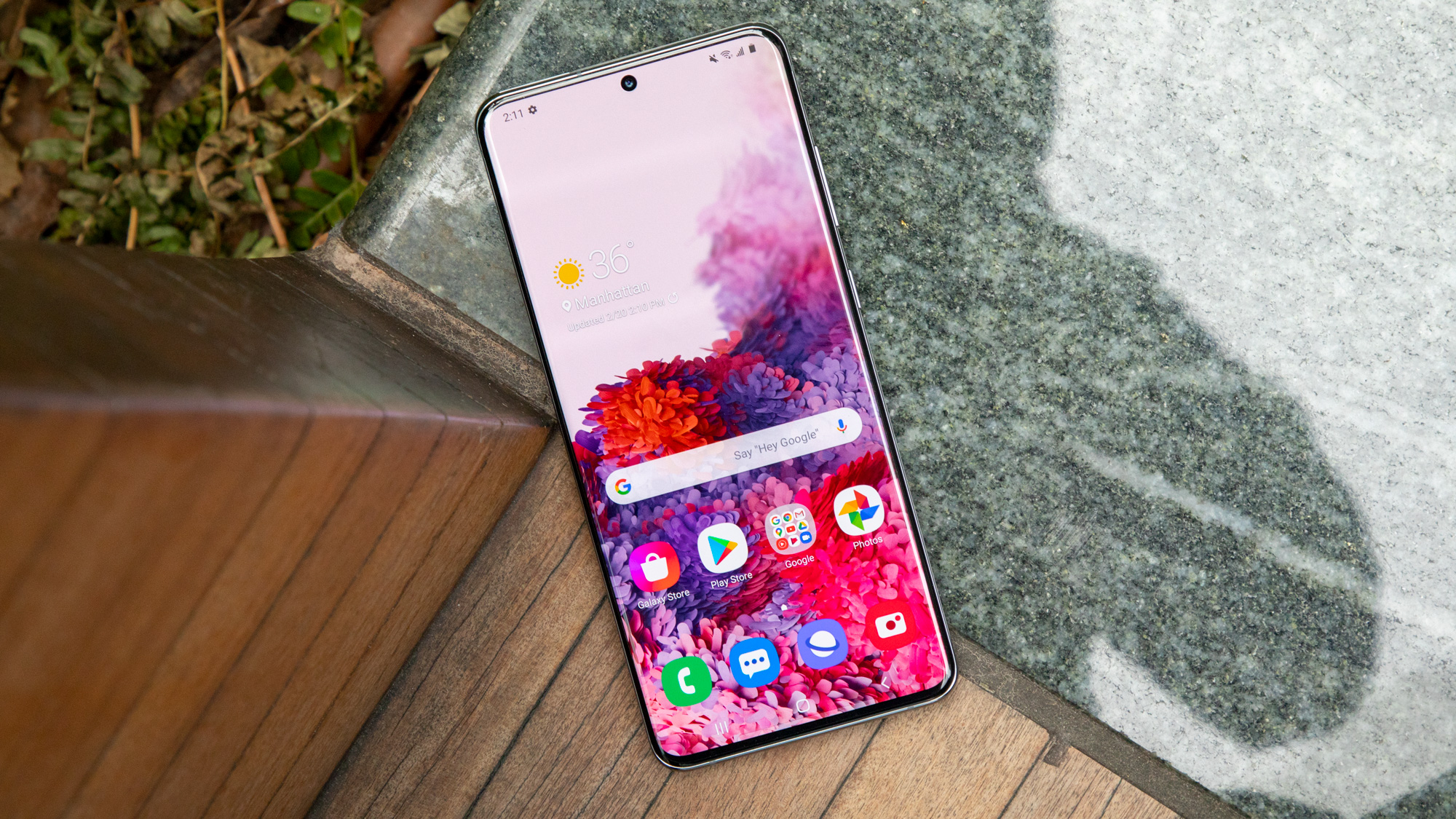
Samsung Galaxy S20 Ultra review: Design
In some ways, the Galaxy S20 Ultra looks a lot like Samsung phones that have preceded it — namely, the Galaxy S10 and Galaxy Note 10. The edges are curved, the display goes right up to the edge of the device and nearly kisses the metal frame, and there’s an Infinity-O hole punch camera cutout up top, smack dab in the center.
But the S20 Ultra in particular is like a Galaxy flagship on steroids. To the point where the phones that followed many of its design features. Features like the massive display, stretching 6.9 inches from corner to corner, and the giant rectangular camera array on the rear dominates the back of the device, aggressively protruding from an otherwise unremarkable slab of gray glass.
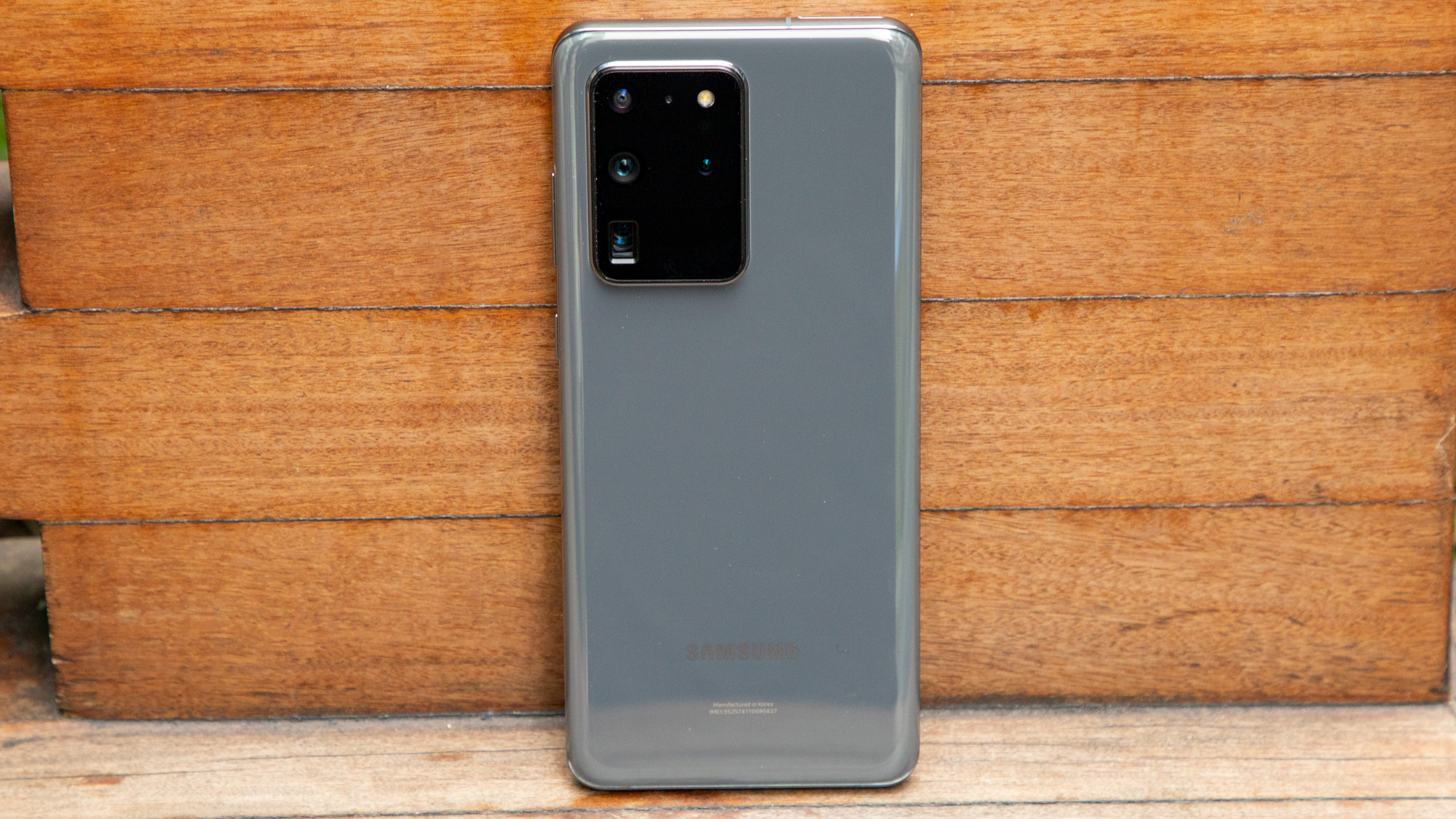
Sadly the S20 Ultra only comes in two extremely boring shades — Cosmic Black and Cosmic Gray — that are underwhelming considering how much this phone has going on under the hood. Samsung does offer Cloud Blue and Cloud Pink versions of the less expensive Galaxy S20 variants, though those hues are absent for Ultra customers. And no matter which shade you buy, this phone is also a serious magnet for fingerprints; perhaps Samsung should have offered a matte glass option, too.
The one aspect of the S20 Ultra’s design we haven’t yet touched upon is size, and make no mistake — this is one beast of a smartphone. It measures 6.6 x 2.9 x 0.34 inches and weighs 7.7 ounces, making it much taller and a smidge thicker than the iPhone 11 Pro Max, but a hair narrower.
To Samsung’s credit, though, it was able to keep the S20 Ultra lighter than 7.97-ounce iPhone 11 Pro Max, even though the iPhone has a significantly smaller battery and a more compact camera module. Regardless, if you prefer your smartphones smaller, the S20 Ultra is certainly not for you.

Samsung Galaxy S20 Ultra review: Camera
The Galaxy S20 Ultra’s camera system has a lot going for it, including a 108MP sensor that captures highly detailed images, a 10x lossless zoom and up to a 100x digital Space Zoom. Plus, every sensor is larger, which helps pull in more light.
That all sounds good, but there's one big problem: The S20 Ultra has some issues focusing. For example, when trying to hone in on a miniature arcade machine up close, the S20 Ultra definitely takes longer to get its bearings than the iPhone 11 Pro Max. The Samsung handset's focus was jumpy, while the iPhone’s was almost instantaneous and smooth.
How bad is the Galaxy S20 Ultra's focus? Well, it is jumpy vs the iPhone 11 Pro Max. Check this out. #GalaxyS20Ultra pic.twitter.com/3JKVlsRXcZFebruary 27, 2020
The S20 Ultra also exhibited jumpy autofocus when shooting video in Bryant Park. As my colleague Mike Prospero moved around the frame, the S20 Ultra demonstrates obvious trouble keeping up; both he and the background shift in and out of focus. Meanwhile, the iPhone 11 Pro Max kept him and the rest of the scene in perfect clarity.
In the days following the S20 Ultra's launch, Samsung provided the following statement surrounding the camera glitches many reviewers have reported:
“The Galaxy S20 features a groundbreaking, advanced camera system. We are constantly working to update software to provide with the best camera experience for consumers. The rollout is beginning in Korea and will arrive in additional regions over the next few weeks.”
That update is out now, and looks to have squashed some of the jumpiness that was unavoidable upon the phone's initial release. Overall, the S20 Ultra truly shines when capturing zoom shots from a distance, but in other scenarios — like at night, or when capturing a shallow depth-of-field Live Focus portrait — the results can be mixed.
The good news is that the 108MP camera can capture a stunning amount of detail under the right conditions. In this shot of the curved Grace building, we could crop around the letters on the facade and still make them out clearly.
Low light photography, however, is more of a challenge for the S20 Ultra. The iPhone 11 Pro’s shot in this particular face-off is noticeably more detailed than the one captured using Samsung's flagship. The texture in the yellow petals is much clearer in the result from Apple's handset.
But then, in other circumstances, the Night Mode shots produced by the Galaxy S20 Ultra compare more favorably to those we took with the iPhone 11 Pro Max. This photo of a tree at night taken with the S20 Ultra is highly detailed and well lit, though there is a slight yellowish cast to the shot. The iPhone 11 Pro Max’s version is much darker and some details, like the bark, don’t stand out as clearly.
Another complaint about the S20 Ultra’s camera is that it aggressively smooths out faces. We took a couple of portrait photos of Mike again, and the S20 Ultra’s image was in focus this time, but still lacking precision. You can especially tell around Mike’s eyes and the right side of his face, which gets blown out by the sunlight. The S20 Ultra’s shot features better contrast, but overall it loses to the iPhone 11 Pro Max here.
The issues we’ve noticed with the S20 Ultra’s camera are especially frustrating, given how the camera performed in most of our other head-to-head tests, particularly when we utilized the other lenses on the device. Samsung’s high-end phone benefits from a 4x optical, 48MP telephoto lens capable of 10x lossless zoom and up to 100x digital zoom. That’s some serious power, and Samsung has an appropriately bombastic name for it: Space Zoom.
We tested the S20 Ultra’s 10x hybrid zoom — which employs software on top of the lens' natural 4x optical power — by snapping a photo of Manhattan’s iconic Chrysler Building from the corner of West 42 St. and 5th Ave., which is about three blocks away. We then captured the same picture from the same vantage point with the iPhone 11 Pro Max, which has only a 2x optical zoom telephoto lens, and none of the post-processing that Samsung uses to clean up digital zoom on the S20 Ultra.
The difference, as you can plainly see, is night and day — like the difference between an impressionistic painting and an actual photograph. The S20 Ultra’s rendition is exponentially more detailed, and it’s amazing when you consider it was produced by a smartphone.
Zooming in on the carvings adorning the facade of the New York Public Library, the S20 Ultra’s mix of sophisticated hardware and software delivered a precise image of two figures and adjacent text. The iPhone 11 Pro Max’s attempt is also extremely grainy and too warm, with a greenish, sepia-like cast that wasn’t true to the day’s actual conditions.
Inside Grand Central Station, the S20 Ultra captured this dim yet once again much clearer shot of the transit hub’s iconic gold clock on top of the information booth. Apple’s device more aggressively exposed the rest of the scene, rather than the clock alone, though the iPhone’s shot is blown out as a consequence in many places. The S20 Ultra’s attempt is conversely a little too dark, but at least it’s crisp enough that it still gives you something to work with in editing.
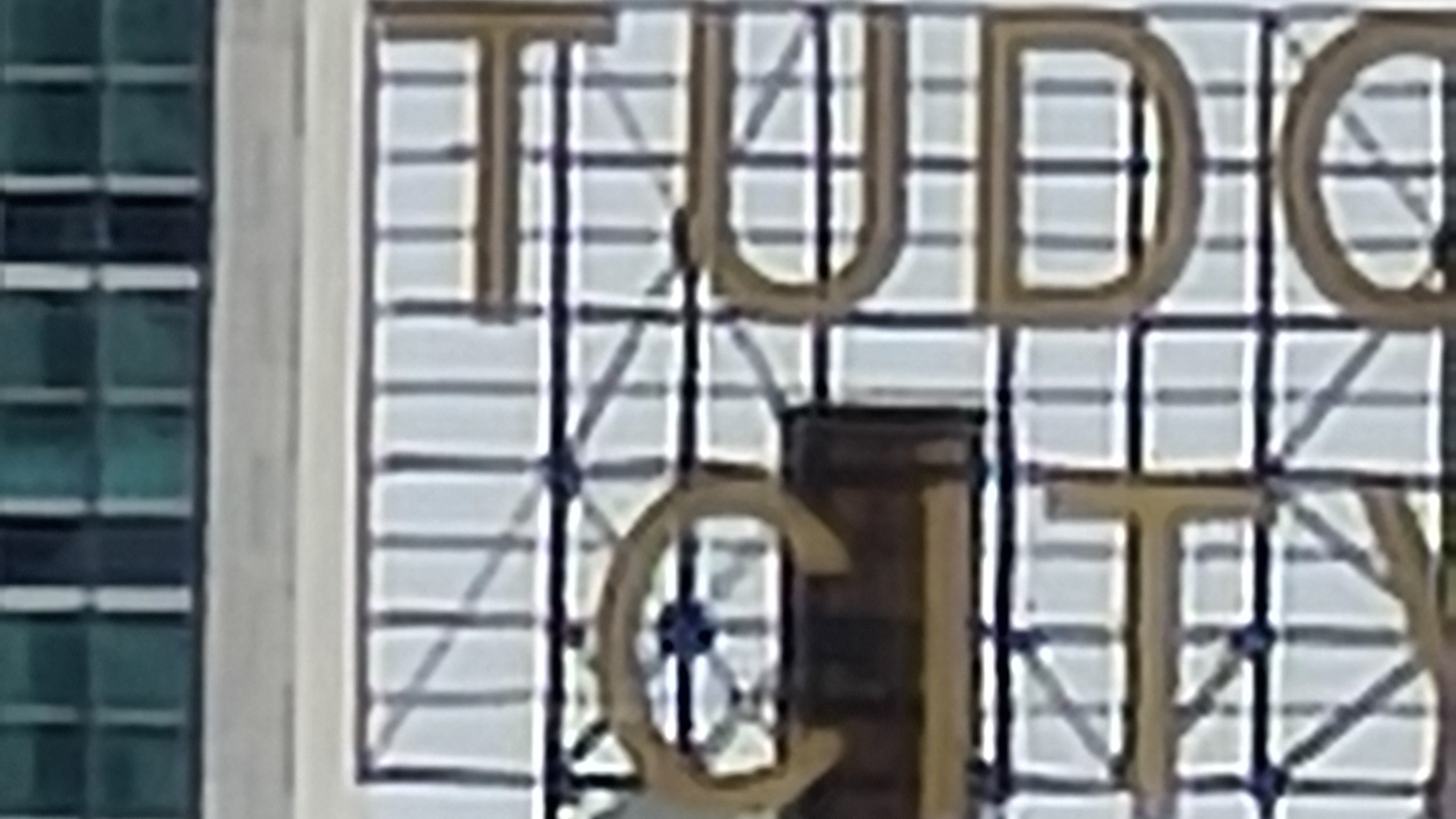
That said, you won’t really want to test the limits of the S20 Ultra’s full 100x digital zoom. For one, it’s really hard to shoot at that kind of power. Any natural hand movements are amplified to the point where it’s nigh impossible to take a perfectly clear and straight picture without noticeable shake. Make no mistake — this is truly tripod territory.
Secondly, even the best results with 100x zoom on the S20 Ultra are remarkably blurry, and all the computational photography hacks in the world won't help 100x digital zoom from a 4x optical lens look remotely presentable. Anything up to about 30x proves to be the S20 Ultra’s sweet spot, but you won’t want to push your luck much further beyond that.
Previous Galaxy S flagships were always weakest when capturing Live Focus shallow depth-of-field portraits. However, even with some of the weaknesses noted above, the S20 Ultra has improved in that regard. Apple can still claim the portrait crown, but some of our portrait comparisons put Samsung in a better light.
The S20 Ultra manages to avoid the hazy warmth of the iPhone 11 Pro Max’s version of this scene, though it also doesn’t do quite as nice a job of exposing the darker regions of the frame and the details within, like the texture of my jacket and scarf. Still, I’d argue the S20 Ultra captured the more realistic photo here, even if it’s not necessarily the best — and that’s a massive step up from portrait mode in Samsung’s prior phones.
Personally, the S20 Ultra impressed me the most when I snapped a pic of one of Grand Central’s ornate chandeliers at 5x zoom. Not only is it generally sharper than the iPhone’s version of the same scene, but the lightbulbs are better isolated, and the way the gold portions catch and manipulate light is rendered with remarkable clarity and contrast by Samsung’s camera.
Even the S20 Ultra’s ultrawide lens — often the weak link of mobile cameras — churns out good results, delivering an eye-catching shot of Brooklyn’s underground DeKalb market in challenging lighting conditions. The iPhone 11 Pro Max delivered a comparatively softer and warmer take, that slightly blew out the neon signs and didn’t paint the edges of objects and text quite as crisply.
As noted, you have to force the S20 Ultra's main camera to shoot at 108MP. What you're then often left with is an ultra-high resolution photo that looks pretty flat, and likely not as good as if you just left the camera alone to begin with. I’m more impressed with the saturated yellows and pinks that the S20 Ultra pulled out of the flowers you see above, but the Pixel 4 clearly wins where contrast is concerned, as it better separated the petals.
Finally, we turn to the S20 Ultra’s 40MP front-facing shooter, which — like the main 108MP camera — also uses pixel binning. The selfie you see here actually only weighs in at 6.5MP, though it you wouldn’t know it. The iPhone 11 Pro Max’s portrait is clearly a little sharper, owing to Apple’s Deep Fusion processing technique, which is designed to extract exceptional detail in medium-light conditions.
I like how much brighter Apple’s take is, and you can especially notice the improved detail in the fabric of my sweater and my skin tone. But I don’t appreciate how pulled back the iPhone’s perspective is compared to the S20 Ultra’s, and once again, Samsung’s white balance is more neutral and not as artificially warm.

The most standout camera feature on the S20 Ultra (aside from all those megapixels and the crazy zoom) is Single Take mode. When engaged, Single Take records a 10-second video and snaps multiple images, giving you an entire gallery of options to choose from and share. The S20 Ultra will pick the best-looking still shot, take a 12MP ultrawide photo, a portrait with Live Focus mode and capture both a sped-up video and a normal-speed clip.
I was impressed with the Single Take mode’s results when I recorded a juggler in action with the S20 Ultra. However, Single Take’s appeal is sort of limited, as it’s really only reserved for when you have a unique subject in motion. It’s also very difficult to determine which shots are which from a glance — this mode could really benefit from an update that labels each piece of content so you can better tell them apart by their thumbnails, like “ultrawide,” “best shot,” "Live Focus” and so on.
Last but certainly not least, the S20 Ultra is capable of recording 8K video at 24 fps, and you can turn moments from your clips into 33MP photos. When you’re done shooting, you can cast 8K videos to Samsung QLED TVs or share them with other Samsung devices — though with 4K displays only now becoming commonplace, it’s hard to imagine anyone has the tech necessary to view such content today, and so Samsung’s achievement here rings pretty hollow. And with the autofocus issues that have emerged, this is a feature that requires more fine-tuning.
Samsung Galaxy S20 Ultra review: Display
Samsung supplies the displays in a great number of the world’s smartphones, which is why it was so surprising to see the Galaxy S10 fall behind the competition last year when it came to the screen. While other handsets —from the OnePlus 7 Pro to the ROG Phone 2 and Google’s Pixel 4 — boasted 90Hz and 120Hz refresh rates, the S10 offered a pedestrian 60Hz.
Fortunately, Samsung is catching up with the Galaxy S20 line. All three S20 models tout 120Hz panels, though the S20 Ultra’s is the largest of the bunch by far, sized at 6.9 inches with a 20:9 aspect ratio and 3400x1440 resolution.

Unfortunately, the Galaxy S20 Ultra’s display comes with a rather hefty caveat to running at 120Hz. When it’s in this high-refresh mode, you only get a Full HD resolution, rather than the native QHD resolution.
The reason for this appears to be a means to conserve battery life, as the higher the resolution and refresh rate the more power hungry a display is. As such, you’ll need to pick and choose when you want to have: a super smooth display versus a super sharp one. There’s an argument that QHD resolutions aren’t so important on phone displays, but they can make a difference when using a phone with the Galaxy S20’s large screen.
It’s also a bit of a bummer as both the OnePlus 8 Pro and the Oppo Find X2 Pro support their QHD resolutions while running at 120Hz. This is facilitated by extra hardware between the phones’ screen and their innards, meaning both handsets are thicker than the Galaxy S20 Ultra’s. So Samsung’s compromise is arguably an acceptable one when it comes to keeping a slim frame in a large phone.
At first, this limitation bothered me. However, in practice, I didn’t notice the resolution hit in typical usage, and I came away so impressed by the heightened refresh rate that I didn’t really care about those missing pixels. I thought the 90Hz panel in the Pixel 4 offered a major step up in terms of responsiveness and ease of use compared to the conventional 60Hz screens of old when I reviewed that device. Likewise, the S20 Ultra’s 120Hz display is even faster and therefore even more refreshing to use. I almost don’t want to get to familiar with it, because I expect it’ll be hard to go back.
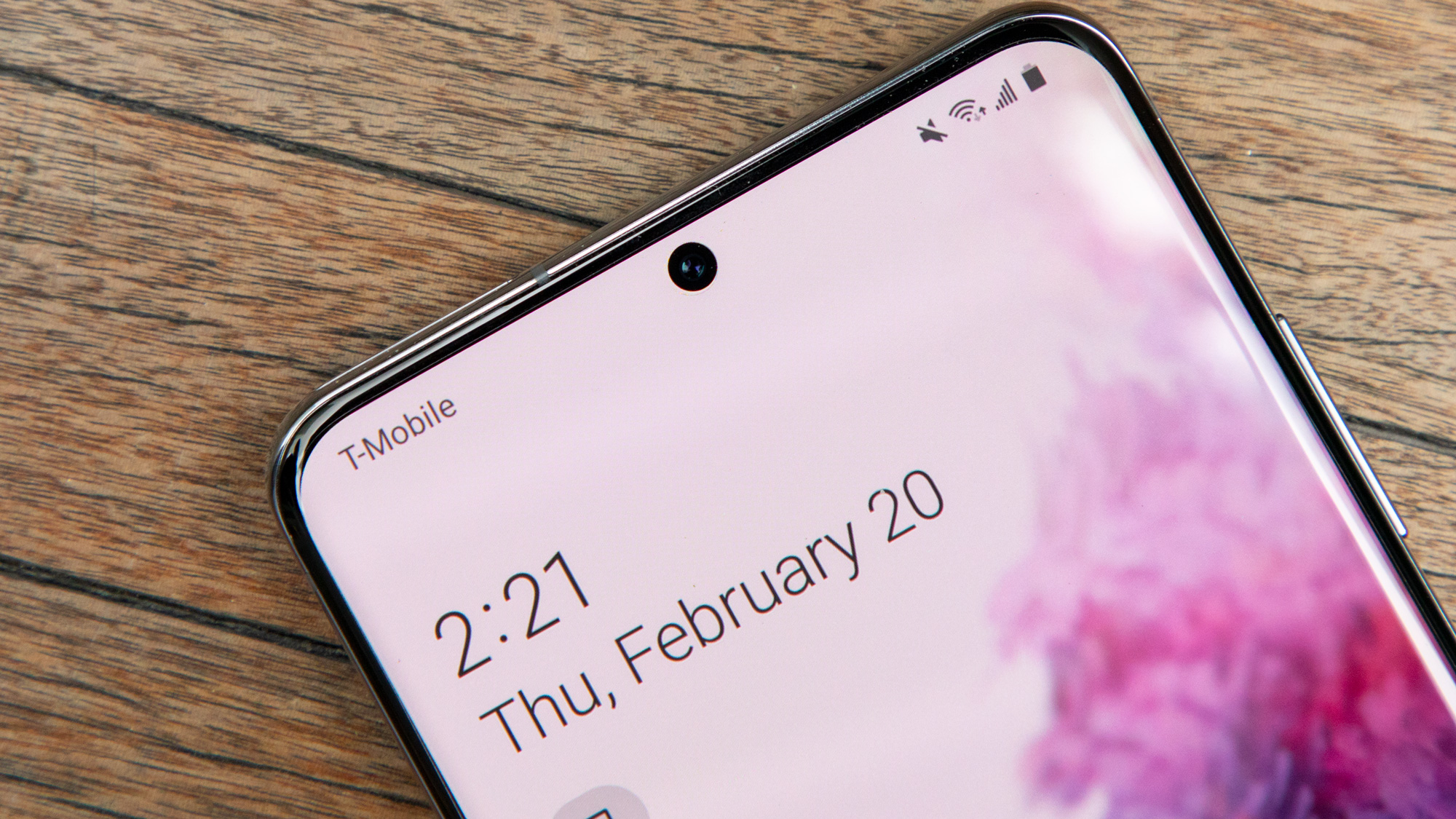
The only problem with the switch to 120Hz is that almost all games and media aren’t optimized for it. This is something that third-party app developers could address on a case by case basis; Microsoft’s Forza Street racing game will be among the first titles to take advantage of the doubled refresh rate, for example. Additionally, the screen’s speedy 240Hz touch sampling rate should make it ideal for highly-competitive games — particularly shooters like Fortnite. But most of the time, chances are you’ll only feel the difference 120Hz makes when thumbing around the interface.
Aside from the refresh rate, the S20 Ultra’s screen looks phenomenal as you’d expect from Samsung, with robust color reproduction, especially at the default Vivid setting. The S20 Ultra covered 231.1% of the sRGB color space according to our light meter, which far exceeds the iPhone 11 Pro Max’s 118.6%. That’s not surprising, given that Apple usually tunes its panels for more subdued, realistic hues — and if you desire the same in the S20 Ultra, you can opt for a Natural color profile in the device’s settings.
Watching the trailer for the second season of Netflix’s Formula 1: Drive to Survive, the S20 Ultra rendered the smoke pouring off the rear wheels of a Red Bull grand prix car in slow motion with striking dynamic range and definition.

It’s a very impressive screen broadly speaking — though if I had one gripe, it could be a smidge brighter. The S20 Ultra peaks at 662 nits when set to maximum brightness (though it only reaches that peak in extremely bright ambient conditions). That’s a bit dimmer than the iPhone 11 Pro Max at 761 nits, and even Samsung’s cheaper Galaxy Note 10 Plus narrowly bests it, at 686 nits.
The roughly 100 nits of additional brightness offered by the iPhone isn’t a hugely significant difference, though it may make contents on the S20 Ultra’s display ever so slightly harder to read outdoors on a sunny day. Plus, it must be said that Apple’s devices can reach their highest possible brightness manually, whereas Samsung’s only reach it in certain circumstances, with the adaptive setting on.
Samsung Galaxy S20 Ultra review: 5G
While most early 5G phones supported just millimeter wave (mmWave) technology, the Samsung Galaxy S20 Ultra is compatible with both mmWave technology and sub-6 GHz bands. The latter gives you a lot more range (though data speeds don't always exceed those of LTE), while mmWave is much faster but requires that you be within line-of-sight of a nearby node.
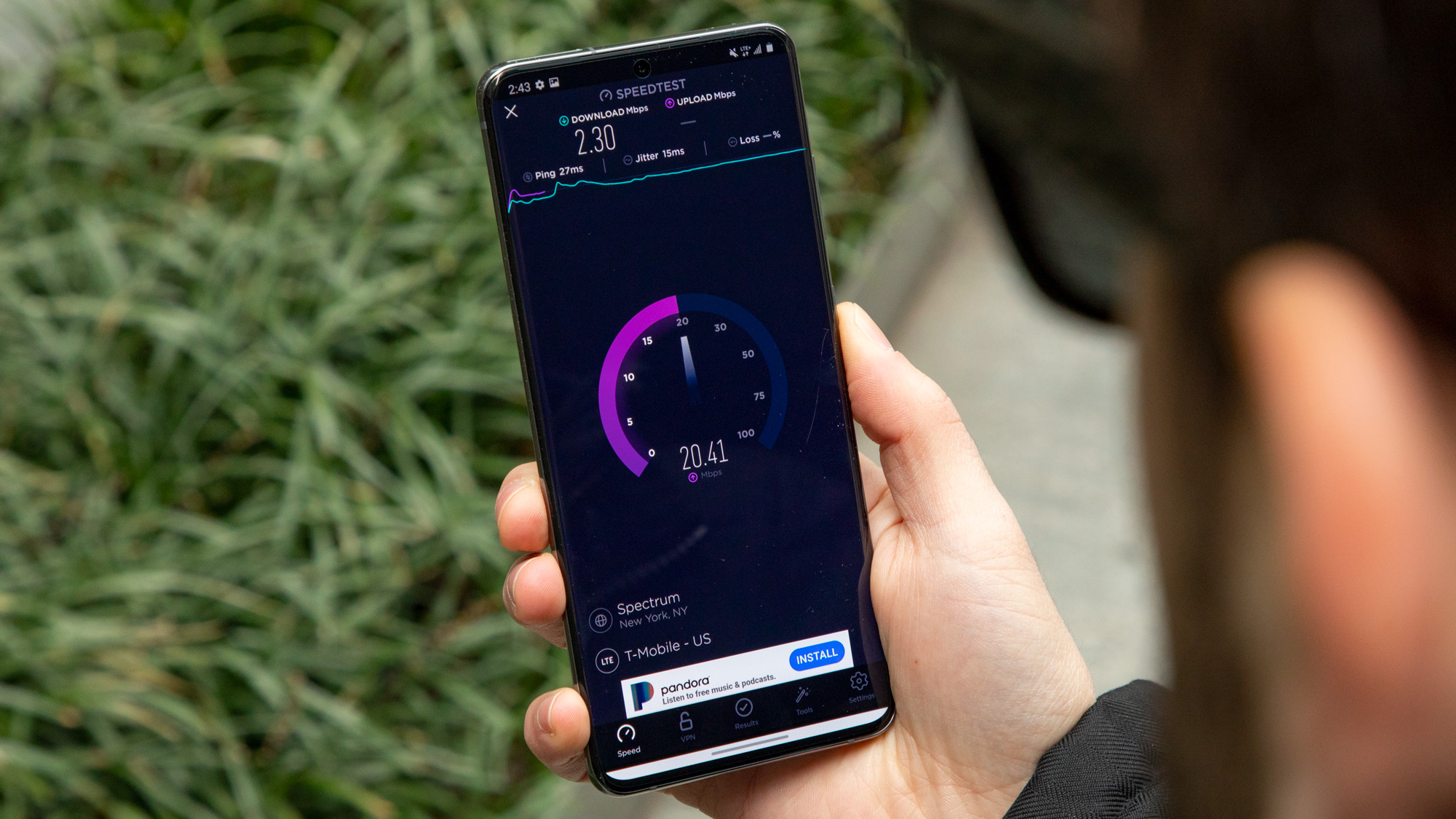
Verizon’s 5G network is built on mmWave and available in more than 30 cities, while T-Mobile and AT&T both offer low-band networks. (T-Mobile’s reaches 5,000 cities, while AT&T is in 20 cities.) Sprint’s midband network delivers slightly faster speeds than T-Mobile and Verizon, but it’s not nearly as fast at Verizon’s 5G network. No matter the network, though, the Galaxy S20 Ultra will work with any carrier’s 5G setup.
While our review unit was often connected to T-Mobile's 5G network, we didn't find it to be all that fast in initial testing, as the phone never pulled down more than 4 Mbps in midtown Manhattan. That's obviously very slow, but successive tests in Brooklyn produced download speeds hovering around 100 Mbps over the Uncarrier's sub-6GHz 5G infrastructure. Certainly much more like it — though some advanced LTE networks can deliver those kinds of speeds, too.
5G networks are still rolling out across the country, but this feature is a necessity if you plan on holding onto your S20 Ultra for years to come.
Samsung Galaxy S20 Ultra review: Performance
The Samsung Galaxy S20 Ultra, like all S20 handsets, will be the first phone on the market with Qualcomm’s new Snapdragon 865 processor, which promises faster performance and reduced power consumption.
That CPU gets paired with 12GB of RAM and 128GB of storage, but you can order the S20 Ultra with up to 16GB of RAM and 512GB of storage for $1,599. (Of course, you can also expand the S20 Ultra’s storage with a microSD card, and the phone will support cards up to 1TB in size.)
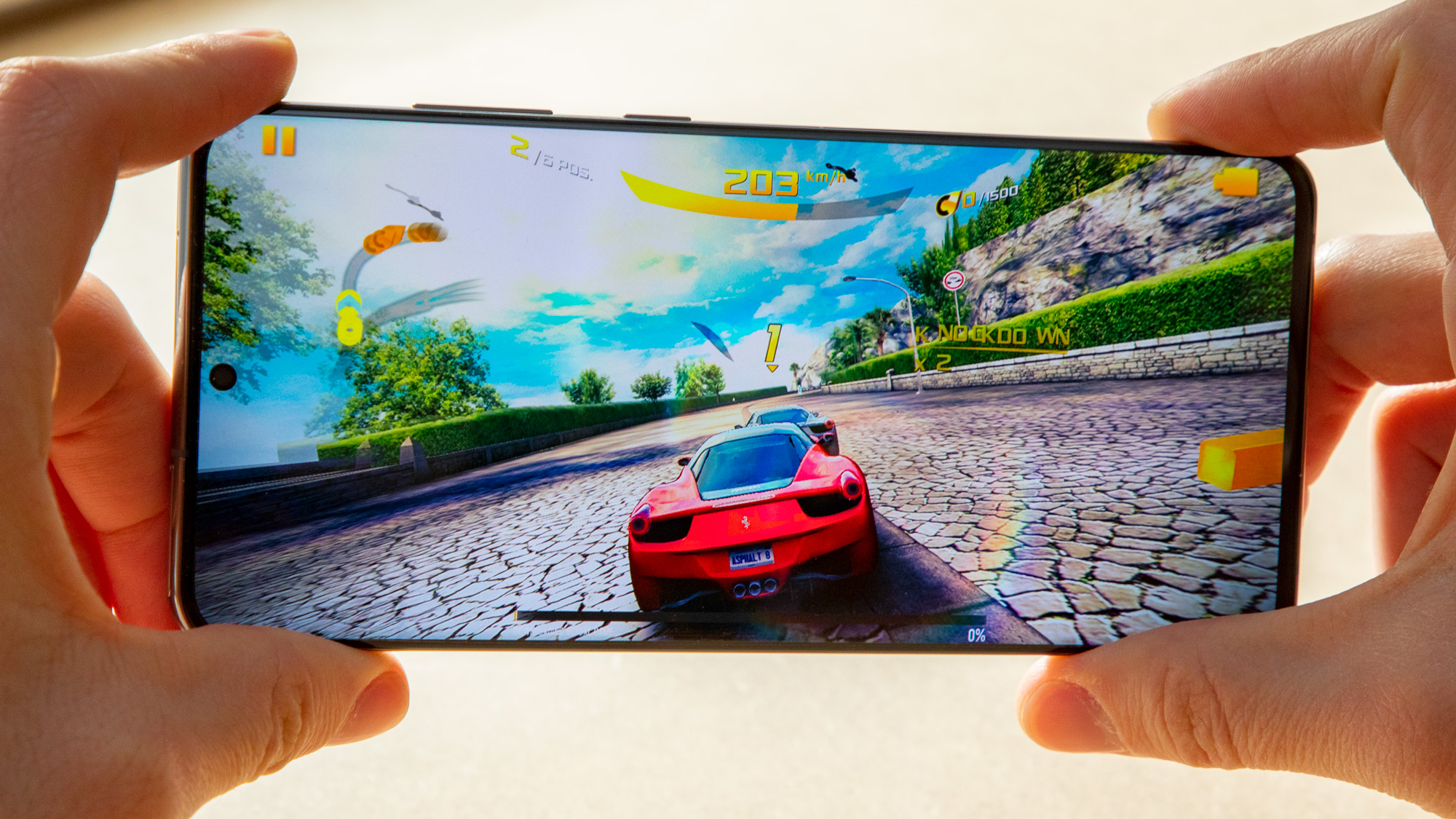
Thus it comes as little surprise that the S20 Ultra was never wanting for more horsepower during our testing. The combination of that 865 silicon and all that RAM means this handset is equipped to handle everything from ordinary multitasking to the most demanding mobile titles, like Fortnite and Asphalt 9 Legends. Fortnite in particular yielded a console-like experience, thanks to the S20 Ultra's massive, super-vivid display, the quality of its graphics and the device's all-around responsiveness.
Samsung's new flagship proved strong in benchmarks, too. In Geekbench 5’s multicore system-wide test and GFXBench’s Aztec Ruins high-tier offscreen graphics test, the S20 Ultra delivered scores of 3,076 and 1,319 (20.7 frames per second) respectively. Those compare well with — yet fall just shy of — the iPhone 11 Pro Max’s performance in those tests, where Apple’s flagship delivered scores of 3,517 and 1,657 (25 fps).
In our video editing test, where a brief 4K video clip is transcoded to 1080p using Adobe’s Premiere Rush app, the S20 Ultra completed the task in 1 minute and 16 seconds, compared to the iPhone 11 Pro Max, which needed just 45 seconds. It’s fair to say this could have something to do with Adobe possibly better optimizing its app for iOS than Android, though it’s impossible to be certain.
One of the S20 Ultra’s handy time-saving features allows users to allocate up to three apps to be stored in RAM so that they launch instantly. And that number goes up to five apps if you opt for the 16GB model.
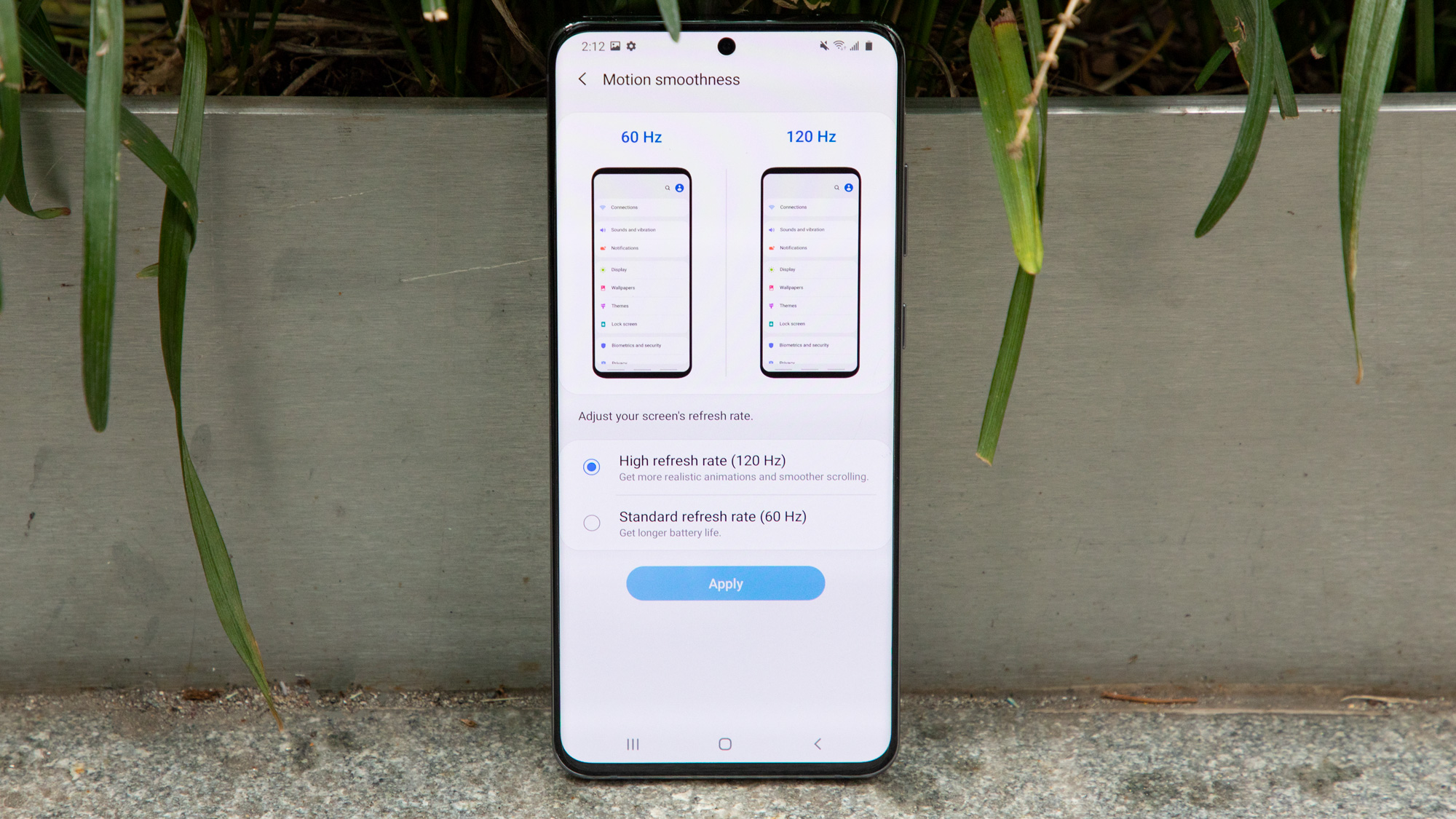
Samsung Galaxy S20 Ultra review: Battery life and charging
One of our most pressing questions entering this Galaxy S20 Ultra review was how long this phone would last on a charge. Samsung has stuffed the S20 Ultra with a ginormous 5,000 mAh battery, which is the biggest yet in a Galaxy S series device — certainly bigger than the 4,500 mAh battery in last year’s Galaxy S10 5G.
But the S20 Ultra is going to need all the power it can handle in order to keep that 120Hz, 6.9-inch display lit up and maintain a speedy 5G data connection around the clock.
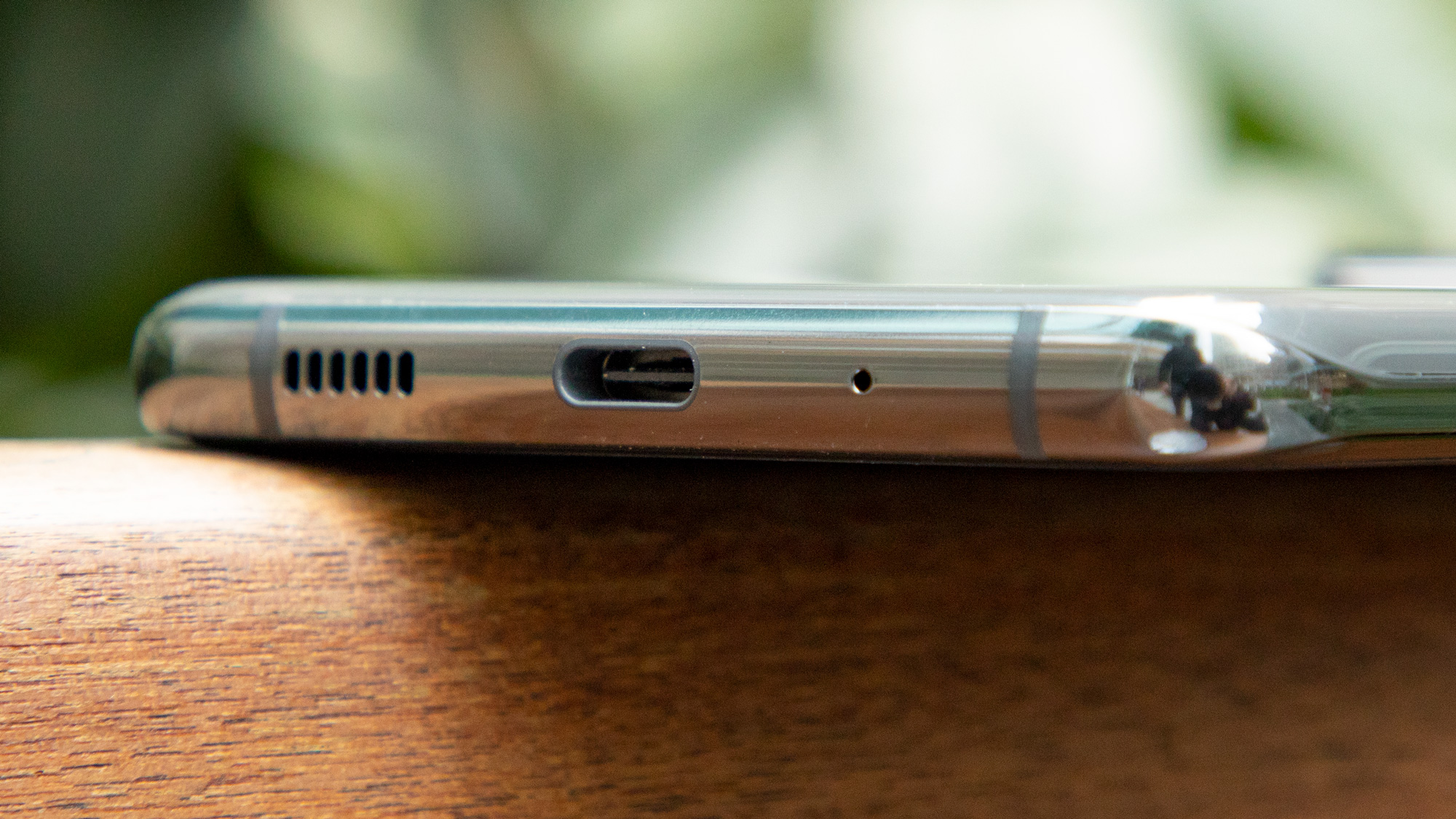
Tom’s Guide sends every smartphone we review through our custom battery test, where devices are forced to reload a list of webpages indefinitely on T-Mobile’s LTE network until they run out of juice, while set to 150 nits of brightness. For the S20 Ultra, we ran this test four times: twice with the screen set to the standard 60Hz, out-of-the-box setting, and twice at 120Hz. In all instances, the resolution was left at the default full-HD.
The difference in runtime due to the refresh rate change was staggering. At 60Hz, the S20 Ultra lasted 12 hours and 13 minutes in its first test, and then 11 hours and 53 minutes in the second. That’s more or less consistent with most other big flagships. To put it in perspective, the iPhone 11 Pro Max lasted 11 hours and 54 minutes in the same test, while the Galaxy Note 10 Plus lasted 11 hours and 9 minutes. Neither of those phones have 5G modems or 120Hz refresh rate options.
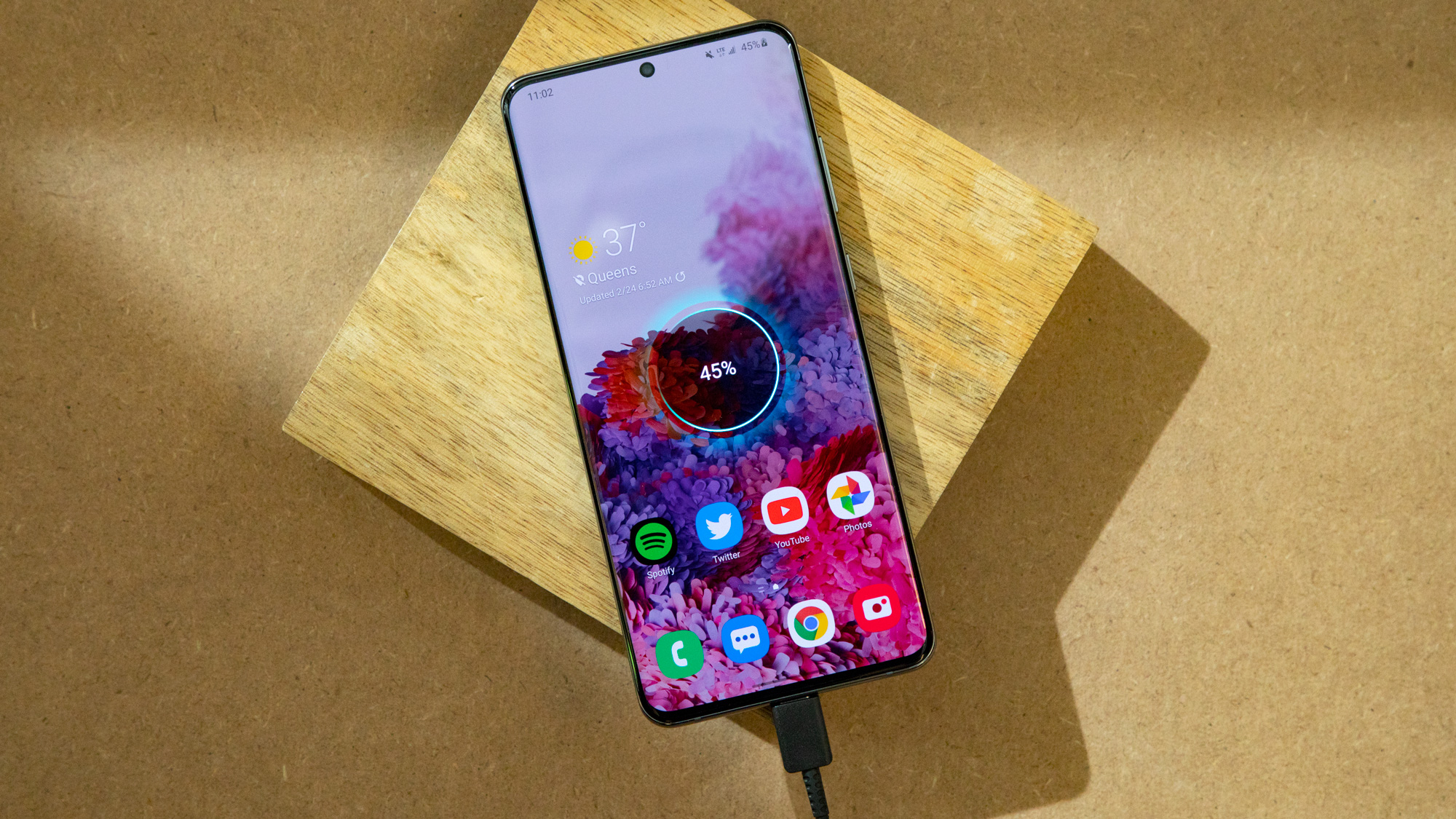
When we went back and ran the same battery test on the S20 Ultra two more times — now at 120Hz — it lasted exactly 9 hours and 13 minutes in both attempts. That’s about three hours less than its 60Hz performance; so in other words, you’ll be sacrificing about a quarter of the S20 Ultra’s longevity on a charge if you insist on taking advantage of that smoother refresh rate.
When it’s time to juice back up, the Galaxy S20 Ultra supports wired 25-watt charging with the stock adapter of the box, as well as Samsung’s 15-watt Fast Wireless Charging 2.0. Owners also have the option of purchasing an even faster 45-watt brick, though the standard 25-watt option seems plenty fast already, judging from our testing. In just a half hour, it took the S20 Ultra from completely dead to 63 percent capacity.
Samsung Galaxy S20 Ultra review: Software
All Galaxy S20 phones come with Samsung’s new One UI 2 software, which simplifies the interface to make it easier to jump into your favorite apps, change settings and more. This rides on top of Android 10, which includes new features like Smart Reply and enhanced privacy and notification controls.
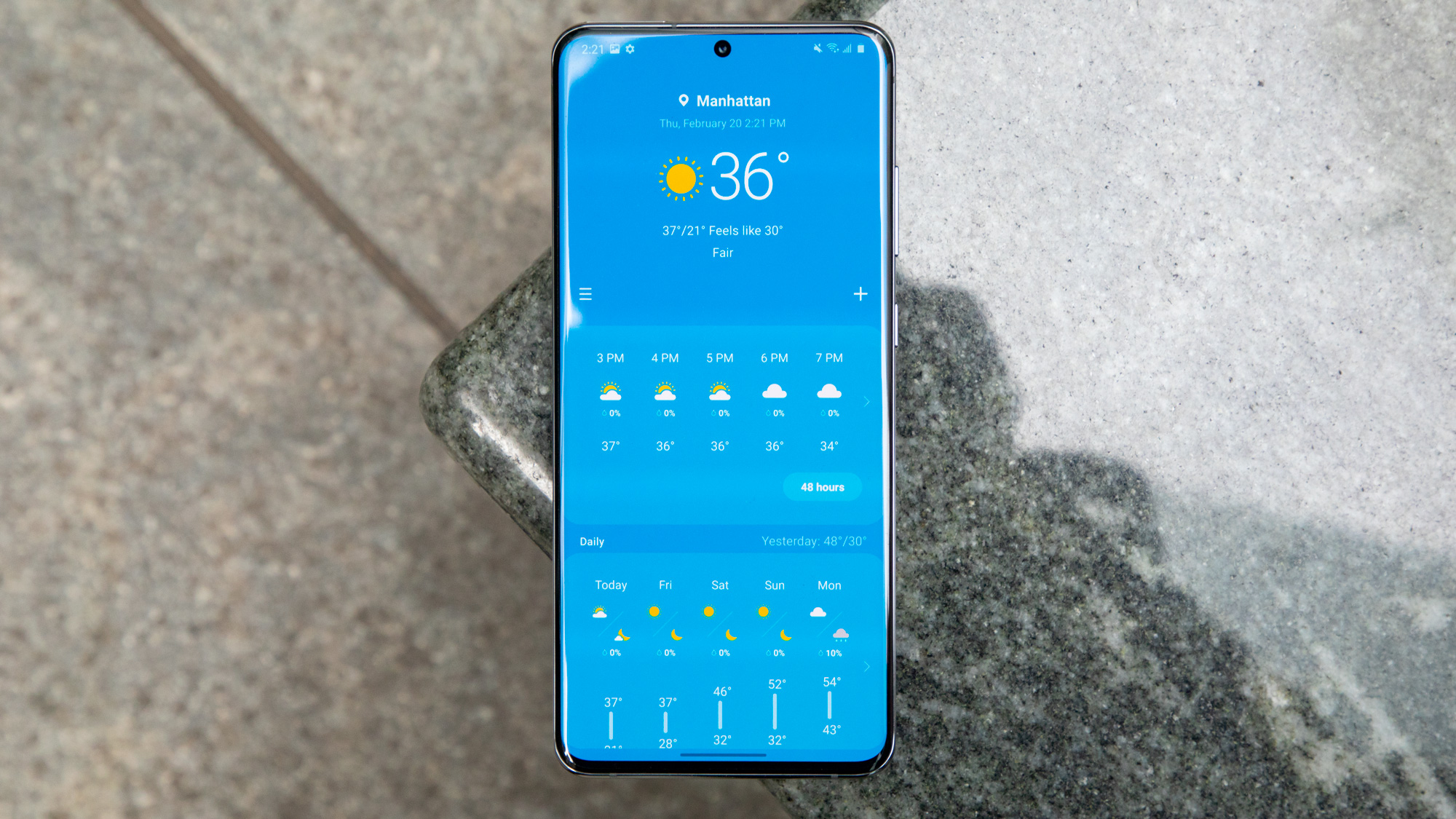
Samsung is also trying to build better experiences into the S20 line, starting with Google Duo integration. Google’s answer to FaceTime, this video chat app is built right into the phone dialer and contacts apps, and you can video chat with up to 8 people. Plus, you can video chat in full HD for the first time.
Other software features include Music Share for sharing out your Bluetooth connection to your car (so you can pass off DJ duties to someone else) and Spotify integration with Bixby routines, so your S20 Ultra will recommend playlists based on contextual cues, like your location and the time of day.
Samsung Galaxy S20 Ultra or Galaxy S21 Ultra?
Right now the question you may be asking yourself is which Samsung flagship you should be buying. On paper the Galaxy S21 Ultra seems like a clear winner. It has a hybrid zoom with 3x and 10 x optical lenses, support for Samsung's S Pen stylus, the more powerful Snapdragon 888 chipset, plus an extra year of Android and security updates.
But that's not to say that the Galaxy S20 Ultra is that bad a phone. It's older, sure, and hasn't picked up all the same upgrades that have been afforded to the galaxy S21 Ultra. That said it still has the same 120Hz QHD+ display, the same 5,000 mAh battery, and a camera that is similar, if not completely identical, and still manages to offer a killer 100x zoom. Plus last year's Snapdragon 865 is no slouch either.
It also has a 45W fast charging, compared to the S21 Ultra's 25W, and a microSD card slot — something Samsung decided to pull from the S21 range. That means you don't necessarily need to cough up the cash for bigger storage options.
Crucially, the S20 Ultra isn't going to cost you nearly as much as the S21 Ultra does right now, and the the price is likely to continue in the run-up to the Galaxy S22 launch in the new year. The S21 Ultra may have started off at a much lower price point, but the newer phone is still more expensive than its predecessor.
The choice is up to you, but the S20 Ultra is still a strong choice, despite its age, so don't feel you have to get the S21 Ultra wait for the S22 Ultra if you don't want them.
Samsung Galaxy S20 Ultra review: Verdict
The Samsung Galaxy S20 Ultra is an almost a parody of the excesses of smartphone design, from its ginormous 6.9-inch display to its 108MP camera and 100x zoom. It’s the hypercar of flagship handsets, among sports cars.
The battery life on the Galaxy S20 Ultra is great, so long as you don’t use the 120Hz screen mode that often. And I’m glad that this phone has 5G to future-proof your investment, provided you can get coverage where you are.
However, when you're originally asked to pay $1,399, you deserve a flawless experience. Unfortunately, the camera's inconsistent performance gives us pause. Fortunately, the newer Galaxy S21 Ultra refines many of the S20 Ultra's rough edges for a better all-around experience — and for $200 less than the S20 Ultra cost when new. If you must have the absolute best in mobile tech, we advise looking at the S21 Ultra first.
Besides, the overwhelming majority of people will do just fine with the $999 Galaxy S20 or $1,199 Galaxy S20 Plus. Buyers of those phones will get the same fast Snapdragon 865 processor, rich displays and improved — albeit different — imaging stacks, which lacked the S20 Ultra's particular glitches at launch.
There's also yet another high-end Samsung handset that arrived not too long ago, in the form of the Samsung Galaxy S20 Fan Edition. The Galaxy S20 FE brought many of the S20 line's most defining features down to an even more reasonable price point, below $999.
On top of that the Galaxy Z Fold 3 is now available, and while expensive it offers a more hybrid phone/tablet experience and S Pen support to boot. The Galaxy S21 FE is also set to arrive in the coming weeks, likely offering the best of the Galaxy S21 range for an even lower price than the $1,199 of the original model. In other words the S20 Ultra has a serious amount of competition right now
All this is to say that while the Galaxy S20 Ultra was indeed very impressive at launch, Samsung's other premium handsets tend to be cheaper with fewer of the S20 Ultra's more frivolous bells and whistles, or of a similar price with more impressive specs and features. Once upon a time, the S20 Ultra was indeed the king, but those times have long since changed.
Adam Ismail is a staff writer at Jalopnik and previously worked on Tom's Guide covering smartphones, car tech and gaming. His love for all things mobile began with the original Motorola Droid; since then he’s owned a variety of Android and iOS-powered handsets, refusing to stay loyal to one platform. His work has also appeared on Digital Trends and GTPlanet. When he’s not fiddling with the latest devices, he’s at an indie pop show, recording a podcast or playing Sega Dreamcast.

